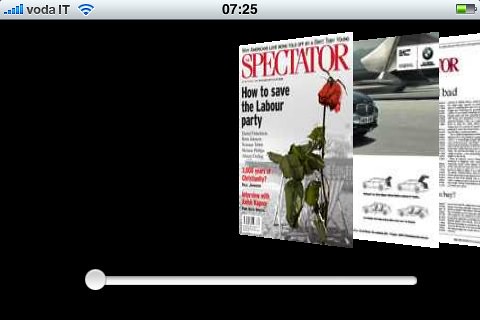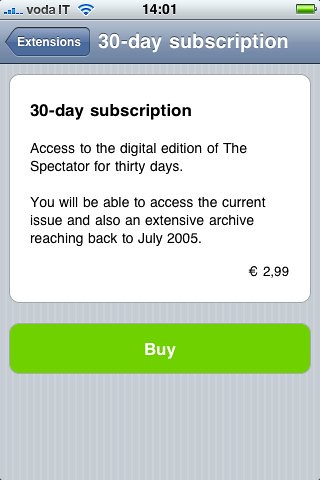The Exact Edition app platform now features full sync-ing of a complete magazine issue. We explained this here.
Shall we summarize the key features of the Exact Editions magazine app platform in rough order of importance!
- The Complete Magazine. Each individual magazine app has access to the current issue and the available archive. The complete issue, all of it. Including advertisements. The most recent issue will sync to the reader's phone (iPod Touch) so enabling off-line reading and faster reading. What is more the individual issues and the archive are searchable when connected to the internet.
- Additional Interactivity. The magazines have significant additional interactivity on the iPhone platform, compared to their print ancestors. All weblinks, emails, and phone numbers should be clickable. The click to call phone numbers are especially useful for magazine readers, and they are a feature of enormous potential leverage for advertisers. To give one concrete example of this interactivity: this week's issue of the Spectator, as an App has 108 web links, 64 phone links, 52 page links, 27 email links, 21 postcode links, 4 isbn links.
- New Subscribers. The magazines can be sold through the App Store as single week subscriptions. And most importantly renewals can be sold through the Apple e-commerce system. iPhone and iPod Touch users can buy magazine issues and renew subscriptions in just the same way that they buy music. 7 day subscriptions to magazines, can be priced at the low end for paid Apps and are consumer-friendly. Publishers of music magazines should see the importance of this! Never mind music magazines; selling a 7 day sub is a great recruitment tool for any consumer oriented magazines!
- Revenues (maybe this should come first!), consumer magazines will sell large numbers of subscriptions through the iTunes App store. The outlay to get an app up and running is modest and the potential market is very large: 50 million users and growing fast. Specialist magazines with a strong identity and a user base should be looking to grow digital revenues now. This is a way of making next year's budget.










